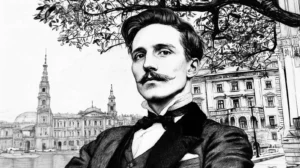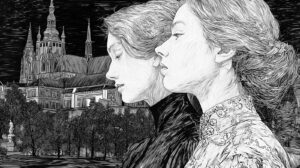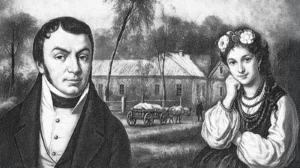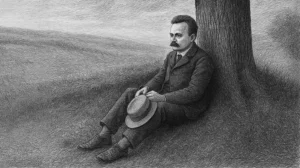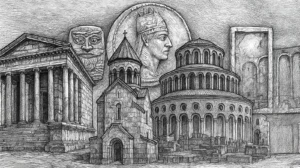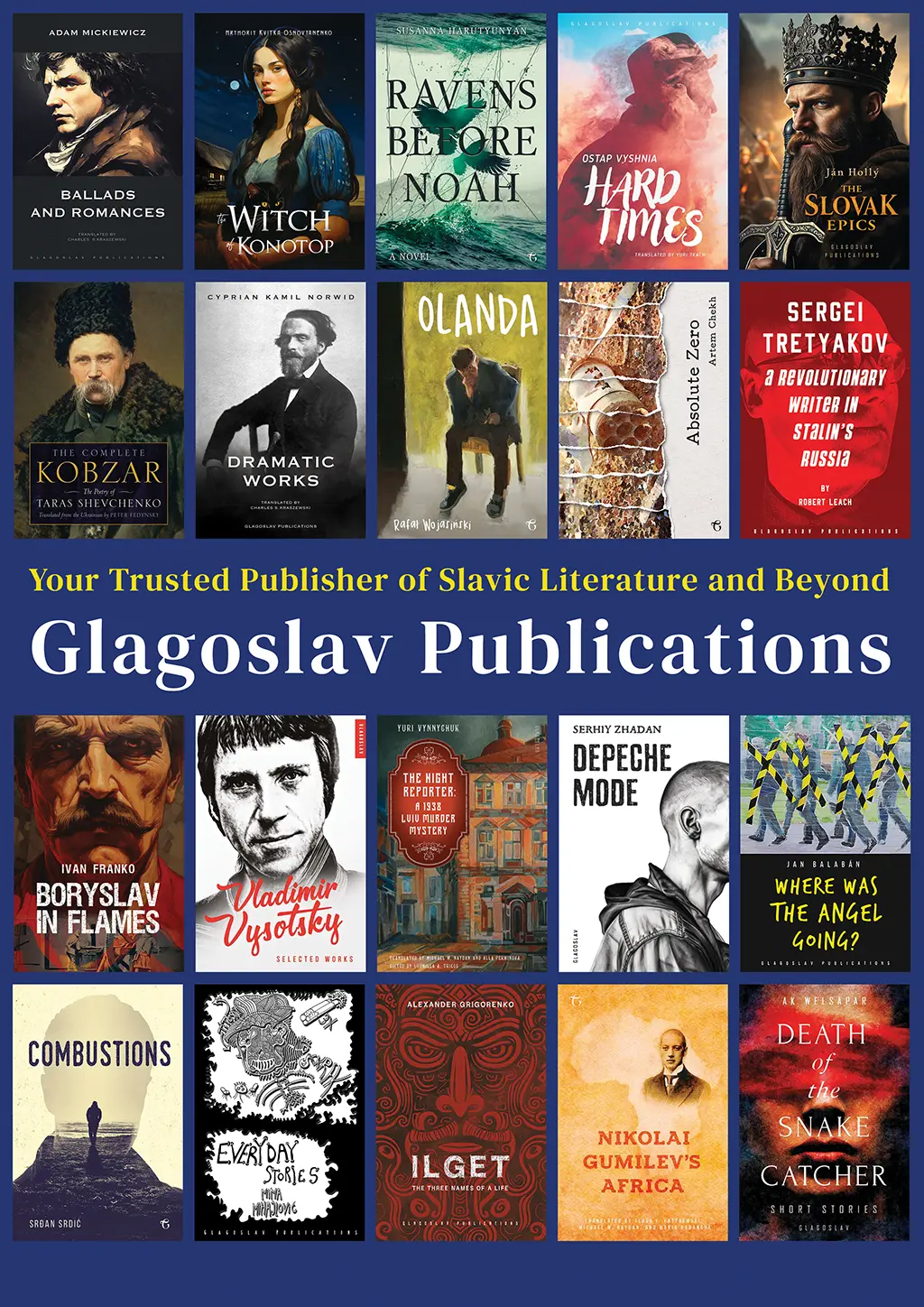Our Blog
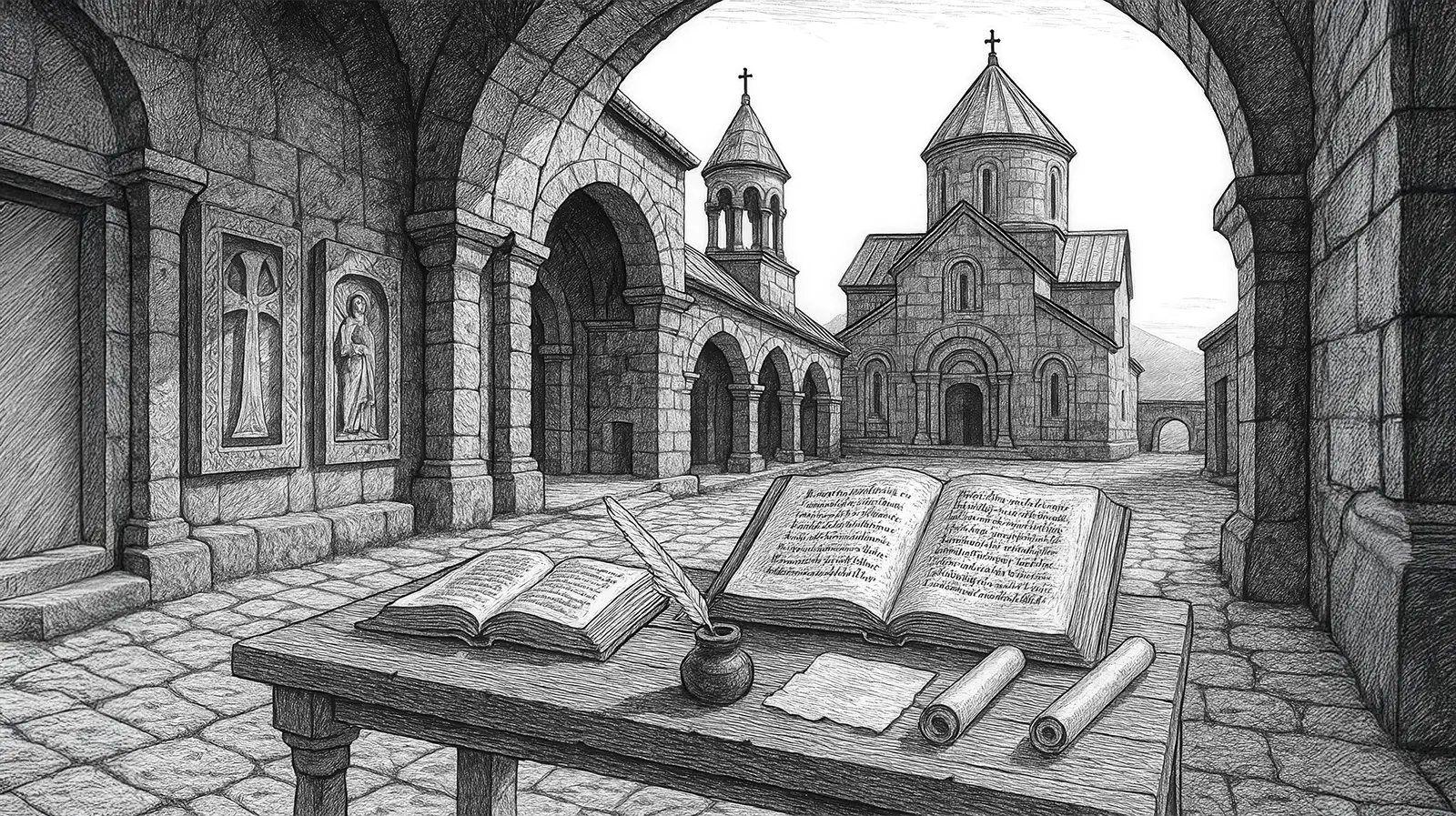
Crossroads of Cultures – Shared Themes in Slavic and Armenian Literature
Introduction
At the vibrant crossroads where East meets West, Slavic and Armenian literatures have flourished, weaving rich tapestries of storytelling that resonate across centuries. Though rooted in distinct languages and histories, these traditions share a profound kinship, shaped by parallel struggles against imperial domination, the scars of war, the ache of diaspora, and an enduring quest for identity. From these shared experiences emerge literary motifs—resilience, memory, and social justice—that speak to universal human dilemmas while celebrating the unique cultural voices of their peoples.
This exploration traces the historical interplay between Slavic and Armenian storytelling, spotlighting the themes and authors that bind these traditions. From medieval epics to modern novels, their works form a dialogue of survival and creativity that continues to captivate readers worldwide. Whether you’re drawn to tales of heroism, reflections on belonging, or the fight for justice, this journey through two remarkable literary worlds offers a lens into the heart of human endurance and imagination.
Historical Context
Armenian literature took root in the 5th-century “Golden Age,” ignited by Mesrop Mashtots’s creation of the Armenian alphabet in 405 CE. This milestone transformed oral traditions into written records, fostering a literary renaissance fueled by Christian texts and chronicles. Similarly, Slavic literature emerged in the 9th century with the missionary work of Saints Cyril and Methodius, whose Glagolitic and later Cyrillic scripts brought literacy to the Slavic peoples, enabling sacred and secular writings to flourish.
Both traditions evolved under the weight of foreign rule—Byzantine, Persian, Ottoman, Mongol, Habsburg, and Soviet empires left indelible marks, blending external influences with fiercely guarded cultural identities. The Armenian Genocide of 1915 and the devastation of World War II across Slavic lands etched trauma and resistance into their collective psyches, turning literature into a space for mourning, defiance, and renewal. These historical upheavals infuse their stories with narrative tension, moral urgency, and a relentless drive to preserve heritage against all odds.
Shared Themes in Both Traditions
1. Role of Women
Women in Slavic and Armenian literature often embody both strength and vulnerability, serving as anchors for their communities. In Hovhannes Tumanyan’s Armenian folktales, mothers and matriarchs are the heartbeat of survival, guiding families through hardship with quiet resolve. The Slavic epic The Lay of Igor’s Campaign casts women as symbols of the homeland, their sorrow and resilience mirroring the land’s fate. Modern writers like Armenia’s Paruyr Sevak, with his poignant poetry, and Belarus’s Svetlana Alexievich, with her oral histories, amplify these roles, challenging patriarchal constraints and celebrating women’s agency in shaping history.
2. Identity & Self
Displacement—whether through exile, migration, or internal colonization—forces characters to navigate fractured identities. William Saroyan’s Armenian-American stories, such as My Name Is Aram, capture the tension of living between ancestral roots and new-world realities, while Ivo Andrić’s Bosnian novel The Bridge on the Drina explores belonging in a multicultural borderland shaped by Ottoman and Austro-Hungarian legacies. These works reflect the universal struggle to define oneself amid shifting cultural landscapes.
3. War & Resilience
War’s shadow looms large in both literatures, spawning narratives of survival and moral fortitude. Vahan Teryan’s Armenian poetry, steeped in the haunting memory of the 1915 Genocide, weaves grief with defiant hope, as in his lines lamenting a lost homeland yet envisioning renewal. Boris Pasternak’s Doctor Zhivago, set against the Russian Revolution, traces a poet-physician’s journey through chaos, highlighting humanity’s capacity to endure. These stories celebrate collective resilience, transforming tragedy into a testament of spirit.
4. Change & Tradition
The tug-of-war between tradition and modernization plays out in rural settings, where village life stands as a bulwark against urban progress. Armenian writer Hrant Matevosyan’s prose, like his novel We Are Our Mountains, portrays the countryside as a repository of cultural values under threat. Similarly, Valentin Rasputin’s Russian “village prose,” such as Farewell to Matyora, mourns the loss of ancestral ways to industrialization. In both, the land itself becomes a character, embodying the fight for continuity.
5. Beauty & Ephemerality
Poets from both regions find solace in nature’s fleeting beauty, using it to reflect life’s fragility. Armenian verses exalt apricot orchards as symbols of renewal, their blossoms a fleeting promise of spring amid hardship. Slavic poetry, from Pushkin to contemporary voices, reveres birch groves as emblems of hope and transience, their silver bark shimmering in tales of loss and rebirth. These images weave a delicate thread through stories of impermanence and resilience.
6. Social Justice & Inequality
Literature in both traditions serves as a moral compass, exposing injustice and amplifying the voiceless. Raffi’s 19th-century Armenian novels, like The Fool, condemn feudal corruption with unflinching clarity, rallying for reform. In Ukraine, Serhiy Zhadan’s gritty prose, such as Voroshilovgrad, portrays the struggles of post-Soviet communities, demanding accountability in a fractured world. These works wield storytelling as a tool for advocacy, championing the marginalized.
Notable Authors & Works
Armenian Highlights: Nerses Shnorhali’s 12th-century hymns blend spiritual reverence with poetic elegance, setting a high bar for Armenian literature. Avetik Isahakyan’s lyrical poetry paints Armenia’s rugged landscapes with aching nostalgia, while Yeghishe Charents’s revolutionary verses, like I Love My Armenia, pulse with defiance and hope. Modern diaspora voices, such as Nancy Kricorian’s Zabelle, weave folklore with reflections on identity, bridging past and present.
Slavic Highlights: Petar Hektorović’s 16th-century Croatian epic Fishing and Fishermen’s Talk celebrates coastal life with vivid realism, while Andrija Kačić Miošić’s 18th-century works preserve South-Slavic heritage through didactic tales. Russian giants Leo Tolstoy and Fyodor Dostoevsky probe the human soul in masterpieces like War and Peace and Crime and Punishment, while modernist Danilo Kiš, in works like A Tomb for Boris Davidovich, crafts intricate narratives of history and loss. These authors fuse local myths with global literary currents, embodying cultural exchange.
Folklore & Oral Tradition
Folklore forms the bedrock of both Armenian and Slavic literatures, preserving archetypes that resonate across time. The Armenian epic Daredevils of Sasun follows David of Sasun, a fearless hero whose battles against invaders embody justice and resistance, passed down through generations of oral storytellers. In the Slavic world, South-Slavic gusle songs from the Krajina region recount tales of valor and betrayal, their haunting melodies a living archive of cultural memory. These oral traditions inspired written works, providing modern writers with timeless symbols to address contemporary concerns like identity and change.
Literary Techniques & Styles
Slavic and Armenian literatures employ a rich array of techniques that enhance their storytelling:
- Intermediality: Narratives transcend the page, inspiring libretti, film adaptations, and theater performances that broaden their cultural impact.
- Thematic Juxtaposition: Elite, courtly language intertwines with rustic folk meters, creating a dynamic tension that mirrors society’s diverse voices.
- Symbolic Geography: The majestic Caucasus and Carpathian mountains recur as emblems of refuge and resistance, anchoring stories in their rugged landscapes.
These techniques lend depth and versatility, making the literatures both timeless and adaptable.
Cultural Significance & Pluralism
Armenian and Slavic literatures serve as guardians of language, history, and identity, forging unbreakable bonds among communities scattered by diaspora or divided by multilingual states. By embracing influences—from Persian poetry to Orthodox liturgy—they celebrate pluralism, weaving diverse threads into cohesive cultural narratives. In today’s globalized world, these traditions offer a model for intercultural empathy, encouraging readers to find common ground across differences and to honor the richness of shared humanity.
Conclusion
Exploring Slavic and Armenian literatures side by side reveals a vibrant dialogue about survival, memory, and justice, where cultural specificity illuminates universal truths. Their shared themes and interwoven histories testify to the power of storytelling to preserve identity amid upheaval. For modern readers, these cross-cultural narratives serve as both a mirror to humanity’s resilience and a roadmap for nurturing connection in an ever-changing world, inviting us to listen, learn, and find meaning in the stories that unite us.
